Nathan Outlaw has established a deservedly strong reputation for his seafood cooking in Cornwall, and has now branched out with The Nathan Outlaw Seafood & Grill at The Capital Hotel, to give it its full title. This venture has a lot to live up to, as The Capital has hosted some serious chefs over the years including Brian Turner, Philip Britten and Eric Chavot in the three decades since it opened in 1971. The chef actually cooking here now is Nathan’s protege Pete Biggs, who has worked with Nathan for over a decade.
The dining room has a much more casual feel than its previous incarnation. A pair of pictures of seahorses hang on opposite sides of the small L shaped dining room, and noise levels are low due to the carpeting. Lighting seemed ill thought-out given that the room has just been redesigned, with directed spots illuminating some tables but not others, and with one table suffering from glare in the reflection of the view into the kitchen.
Starters were £7 to £15, main courses £20 to £42 with vegetable side dishes £3 extra, and desserts £6 to £8. Coffee was £4. There was also a £20 option for two courses at lunch only. The wine list was substantial, with 335 wines ranging in price from £27 to £3500, with a median price of £123 and an average mark-up level of 2.8 times the retail price, which is pretty fair by London standards, and even more so compared to what is common in Knightsbridge. Example wines were Bourgogne Blanc ‘La Combe’, Marc Colin 2008 at £48 compared to a high street price of £11, Meursault Domaine Ballot-Millot 2007 at £80 for a wine that retails at £32, and Puligny-Montrachet Domaine Leflaive 2008 at £175 for a wine that will set you back £60 to buy in a shop. Bread was made from scratch, with a selection of beer bread and Cornish flat bread. The beer bread in particular was excellent, palpably fresh and with good crust (easily 16/20). A nibble of fish cakes with herb mayonnaise had crisp batter, but the gurnard filling rather lacked flavour (14/20).
Scampi (£15) char-grilled simply served in their shells were properly cooked; these are easy to overcook to a mush, but here their texture was fine, though they were not of the quality of those that turn up in Paris restaurants (14/20). Crab (£12) with celeriac salad and apple dressing was a simple but enjoyable starter, though a little crab shell in the crab tells me that the chef should ask Santa for an ultra-violet lamp this Christmas. The celeriac remoulade had excellent flavour, the crab itself was fine though again not stellar in quality (14/20 if I ignore the shell).
Dover sole (£36) had good flavour and was cooked well, though the parsley, lemon and garlic dressing was quite subtle. Seasoning was rather tentative to my taste, though it is of course easier to add than to take away seasoning (15/20). Monkfish and duck (£30) was served with barbecue sauce. The duck was fine but the monkfish was distinctly on the overcooked side. The barbecue sauce was good, with a pleasing sourness from the red wine vinegar and a hint of chilli bite, but for me there could have been more of it. However the rather chewy monkfish let the dish down (12/20). New potatoes on the side were cooked carefully.
St Clements (orange and lemon) posset with sugared pistachios was very pleasant. Posset is a delightfully simple old English dessert of cream, sugar and citrus juice, but the proportions of these matter and it is easy to end up with something either sickly sweet or too sharp. This one was nicely judged (15/20). I also tasted a good treacle tart served with clotted cream, and a suitably indulgent choclate fondant. Coffee was also good.
Service was very good, with the Canadian sommelier in particular being capable and charming. The bill came to £150 a head, but this was with a perilously large amount of good wine. With a modest bottle of wine to share, it would be possible to eat a three course meal with coffee for around £80 a head. This is still hardly a bargain, and at those prices the slight blemishes need to be ironed out. The menu is certainly appealing, but I wonder whether the restaurant will suffer from artificially high expectations given the stellar history of the restaurant at The Capital. The Seafood and Grill is clearly pitched at a lower ambition level than Nathan’s flagship restaurant in Cornwall, but I suspect that those Londoners who have not made it to the west country may be looking for something more than is on offer here.
The notes below are from July 2010.
The Capital dining room has not changed recently, but the chef has, with Eric Chavot moving on. In his place is Jerome Ponchelle, who was previously head chef at Wiltons (and cooked for some time at the Connaught under Michel Bourdin). The tasting menu is £70, with starters £14- £18 and main courses mostly in an eye-watering range of £32-£36, with desserts a further £12. The extensive wine list has choices such as Domaine Herve Seguin Pouilly Fume 2008 for £32 compared to a retail price of around £11, up to Didier Dagenau Silex 2007 at £190 for a wine you can buy for £65, Henschke Hill of Grace 199 was £285 for a wine that these days has climbed up to £229 in price retail. Breads are made from scratch and consisted of excellent foccacia, sourdough with a lovely crust and a French country bread (breads around 17/20).
A nibble of guinea fowl and foie gras terrine with sauternes jelly didn’t work very well, the foie gras taste not really coming through, and lacking any acidic element to balance the richness (13/20). Better was my starter of a pair of scallops with braised lentils and curry sauce. This was nicely made, the scallops sweet and carefully cooked, the lentils providing an earthy balance and the curry taste restrained yet lifting the dish (easily 16/20). I thought that the portion control was mean though – at £18 just two scallops appeared. Generally in a restaurant food costs should be 25% - 28% of retail price, yet here the food costs were surely well under £3; one more scallop would hardly have gone amiss. Other starters sampled were white crab meat with avocado and vine cherry tomatoes; the tomatoes had reasonable flavour (a rarity in England) and the crab was fine (15/20). Ravioli of duck foie gras with leeks and summer truffles was very well made (16/20).
For main course, Tournedos of beef Rossini was something that would look entirely at place at Wiltons, the beef nicely prepare and of good quality, the sauce enjoyable, the spinach cooked nicely, the sauce fine (15/20). Lobster thermidor was another veteran dish, the lobster tender enough though the cheese taste was very subdued (15/20). I also tasted a Dover sole served on the bone and was of high quality. Cheese is no longer from Bernard Antony but has reverted to Premier Cheese. It was fine, though the Comte was past its best (15/20).
A pre-dessert of chocolate mousse with apricot jelly was a well constructed dish, with pleasant rather than striking taste (15/20). Better technical skill was shown in a hazelnut Gianduja (sweet chocolate) sponge with caramelised white chocolate foam, which had good hazelnut taste and moist sponge (16/20). This had the edge on the other desserts sampled, a Muscavado meringue with exotic fruits and a mango and turmeric sorbet (15/20) and poached rhubarb, iced yoghurt and almond biscuits, which did have very good rhubarb but a rather tasteless iced yoghurt (15/20).
Service was reasonable, but seemed to me to be going through the motions rather than having a real sense of welcome (and it was not as if the staff were exactly stretched this evening). Coffee was pleasant, and at £5 it should be; a top-up of double espresso was charged at a full £5 extra on the bill, a practice I find little short of daylight robbery (the coffee costs at best 20p, and I didn’t see another tray of petit fours appearing). Indeed the bill was the real problem. At £150 a head, even with a fairly generous set of drinks, the prices here are just too high for the level of cooking being delivered. I admit that Dover sole and the like is expensive, but £14 for a starter of gazpacho? The prices seem to me high two star level for food that is borderline one star. The practically empty dining room (four tables taken in total) told its own story on the general feeling about the value for money on offer.
On the 14th August 2009 executive chef Eric Chavot left the Capital. Richard Hondier, who was head chef here under Eric for six years, is currently in charge, so please bear this in mind when considering the notes below, which are from June 2008..
Normally hotel dining rooms in the UK are strictly to be avoided, but there are a few exceptions. The boutique Capital Hotel has long had a fine restaurant under the expert hands of Eric Chavot. Eric has a long history of successful restaurants in London after originally cooking with Nico Ladenis. Until the prices went up recently we used to have Christmas lunch here every year, which incidentally features the lightest Christmas pudding I have ever tasted ("light" and "Christmas pudding" are not normally words that appear in the same sentence). Eric Chavot’s cooking appeared stuck at the 17/20 level in his previous ventures but firmly entered two Michelin star territory at the Capital a few years ago. I have had many excellent meals here over the years, though my last meal two meals have been relatively disappointing, and I am concerned that this is a restaurant which is drifting in quality. Notes from my last meal follow.
The meal began with home cured “treacle” salmon with deep fried soft shell crab. The soft shell crab itself was excellent, served with a little lime which gave a welcome acidic balance to the crab. However the salmon itself I found disappointing, rather dried out pieces of salmon that did not itself have a lot of taste (15/20). A middle source of a scallop with veloute of pea and rocket was pleasant, the scallop a little overcooked, the soup having quite strong taste (15/20).
For main course, guinea fowl was nicely cooked, served with a pilaf of rice that lacked any real fragrance, and a little roll of fried vegetables (16/20), Sole was served with excellent tagliolini pasta, the latter having lovely texture. The pasta on its own would have been 18/20, the dish though again 16/20 level; the lemon sole nicely cooked but this is a simple dish that lacked excitement.
Cheese was superb as always, coming as it does from Bernard Antony. No aged Comte this time, but excellent Camembert, Beaufort and goat cheese in excellent condition (19/20). For dessert, poached vanilla rhubarb with lemon sorbet and yoghurt was enjoyable, the rhubarb and lemon balancing the yoghurt nicely (16/20). Araguani (chocolate) jelly with moscovado (light brown sugar) crumble, orange sorbet and chestnut foam had a lot of flavours going on, but this dish worked well (17/20). Coffee was very good served, with nice chocolates and petit fours (17/20). A 3 course lunch is £29.50, with cheese £11 as an extra course.
This is a fair price, but the wine list is seriously over-priced. The list is extensive and has many excellent growers, but an average gross profit of 72% means that a £10 wine (in the shops) will appear at £36 on the list, and when you add VAT that is £42.30. There are many wines well in excess of this, some at five times retail price. There is virtually nothing below £50 a bottle, just a couple of token wines e.g. a Greek wine at £32. Usually Alsace is a quite corner of a wine list where value can be found, but even here a recent Trimbach Cuvee Frederich Emile (which retails at £22) was listed at £87.
After a poor dinner last summer I was hoping for an improvement, but to be honest this meal was really only 16/20. Neither the chef Eric Chavot nor the restaurant manager were present today, which may not have helped matters, but this is hardly something a customer can work around. The Capital used to be one of my regular haunts, but this is now two meals in a row where the cooking has been a considerable distance from two star level.
Below are notes on a dinner in May 2007.
The Capital dining room is a quite cosy room with just nine tables. The very high ceilings and wood panelled walls give a feeling of luxury, but the room feels welcoming. Lighting is cleverly done, with two grand chandeliers but also a profusion of carefully directed ceiling and wall spotlights. Walls and ceiling are painted cream, while the carpet has a black and white striped pattern. Chairs are sensible, classical wooden ones with upholstery in a green foliage pattern. One long wall has windows looking out onto Basil Street, the other has wood panelling and a mirrored section at the top. A few prints adorn the walls, and the room is peaceful, with no music. Each table has white, high quality linen tablecloth and napkins, and an attractive display of roses in a glass vase, but no other clutter apart from a silver knife rest that seems superfluous to me. A glass display plate has some foliage embedded within it.
The menu is appealing, with plenty of classical, well-balanced French dishes. The wine list is very grand, with 46 pages in all, largely French but with a smattering from Italy, Australia, Germany etc. There are seven whites, eight reds and seven dessert wines by the glass, with the whites and red ranging from £6 to £14.50. There is a wide selection of half bottles of red (just a few white) and a good set of dessert wines. The classic French regions were covered fully, and there is more erratic coverage elsewhere e.g. the Alsace section had just five wines to choose from, and some of these were rarefied and costly, whereas Germany had seven. The regional French Mas de Daumas Gassac 2002 was listed at £51 for a wine retailing at £14. The rest of the world was covered patchily e.g. the excellent Chateau Musar from the Lebanon was £31 for the 1999 (retail price around £12). At the higher level Penfolds Grange Hermitage was listed in five vintages, going back to 1979 at £595 for a wine that retails at £141. The list had essentially nothing below £30 a bottle.
Service from formally dressed staff was generally good, but the awkward L shaped room means that there actually no staff visible in the dining room for considerable periods other than when dishes are brought in. Mostly this is not an issue, though it caused a few minor topping-up slips. Bread consisted of rolls of either brown, white baguette, tomato or olive; they are all made on the premises. The brown bread was the pick of these, classically made with a nice crust and airy texture, the least good was the tomato bread which was slightly chewy tonight (17/20 overall).
Amuse-bouche was an adequate but unexciting cold cucumber soup with a little yoghurt foam and a tender mini duck "kebab" (17/20 for the duck). My wife had pickled cold mushrooms with a garnish of basil and a little melba toast, which really had little to recommend them; they tasted as appetising as cold, pickled mushrooms sound (13/20). Scallop with sauce vierge was more successful. The single scallop was fresh, plump and sweet, lightly seared, resting on a bed of tomato and lemon foam, garnished by a slice of melba toast with intense tapenade. The lemon was a pleasing foil to the slight sweetness of the scallops, and the dish worked well as a whole (18/20).
For the next course I had foie gras terrine served in a small glass jar, topped with apple foam with a pool of apple compote on the side. This was accompanied by a celeriac and apple remoulade and a slice of gingerbread. The foie gras itself had excellent flavour and smooth texture, and the apple was a nice balance to the richness of the liver, the celeriac providing a contrasting texture (18/20).
My wife had langoustines "Nicoise", served with quail eggs, haricot verts, an excellent potato cake, small cubes of balsamic jelly and the by-now-familiar melba toast with tapenade. The components were mostly fine but the langoustines themselves, a tail served in the shell and a piece of the meat on its own, were cooked for too long and so their texture had a hint of chewiness that should not happen in a restaurant of this calibre (16/20 overall, just).
At this point the wheel fell off the wagon. My wife sea bream appeared with prawn toast and a selection of stir-fried vegetables that looked really sorry for themselves, as if they had been cooked some time earlier and left on the side. The fish itself was seriously overcooked, something apparent from its appearance alone. The prawn toast was fine, but this was a disaster of a dish. I called the waiter over and asked that the kitchen review the dish, to be told moments later that the chef had reviewed the dish and it was absolutely fine. To me this is a lot worse than the patent mishandling of the dish; if they had just admitted there was a problem and re-cooked the dish that is one thing, but to just deny there was a problem was inexcusable. At best this was 12/20 level.
To add to the problems, I then tried to cut into my duck and the knife bounced off. Although cooked pink the duck was exceedingly rubbery. I asked the waiter about this and he said "ah, you will be wanting a sharper knife" and reappeared with a fearsome looking steak knife. Even with this it was hard going to cut through, and the one mouthful I tried tasted, unsurprisingly, chewy. I have had duck at the Capital before and it is usually fine, so I have no idea what was going on here. The kitchen claimed that the duck was perfect. It is hard to score something that one could barely cut into without a Black and Decker attachment. I have had the same dish before and it has been in the 17/20 to 18/20 range.
The best affineur in France is Bernard Antony from Alsace, and only two restaurants in London at present have his cheese: Sketch (due to the involvement there of Pierre Gagnaire, who uses Antony in his 3 star Paris restaurant) and here. Antony is uncompromising in his search for fine quality cheese, which is why many of the top 3 star restaurants in France use him. Since I am constantly whining about how bad the cheese boards are in the UK, it is worth talking a little about the one tonight. There are just 17 cheeses on display, rather than the visually impressive legions that some top UK restaurants place choose to serve, but all the cheese here tonight are clearly in impeccable condition, from Corsican ewe’s milk cheese through to rarer choices like Tomme de Carayac and Petit Creux (very like the better known Epoisses) and the classics like Forme d’Ambert. Antony is famous for his aged Comte, and here we have the regular two year old version rather than the four year old one in his "reserve" selection that graces the boards of top 3 star places in France. However even the regular version here knocks spots off anything you will find from UK suppliers like Premiere Cheese. Between us we tried nine cheeses, and every single one was in pretty much faultless condition (20/20 as there is little that could be done to improve upon it). Cheese was served with a few grapes and excellent walnut and sultana bread, and a selection of biscuits.
The first dessert was home-made yoghurt with an intense red fruit and prune compote and a silky Jivara chocolate ice cream, garnished with a thin stick of chocolate (17/20). Next was Calvados jelly, apple jelly, hot caramelised apple and mini crème brulée. The latter was very well made, with excellent custard and a crisp surface (17/20 overall). Finally we tried a chocolate dessert with a salted caramel base on which was milk chocolate mousse, served with a misjudged passion fruit and banana sorbet in which the banana flavour utterly overwhelmed any passion fruit flavour that may have been trying to get attention. Also jarring was a biscuit tuile that tasted of the grease in the pan in which it had been baked (15/20). Filter coffee and espresso were excellent, with strong coffee flavour. My espresso arrived in a proper sized coffee cup, filled up (no smear of coffee at the bottom here). It was also topped up as often as desired.
Petit fours had moved into fashionable Spanish territory, with a disturbingly hard mango jelly, a better raspberry jelly, a hard nougat bonbon and a caramel bonbon. Next to these were a selection of poorly made macaroons with lurid colours, flavoured with chilli, mint and lavender. One can debate whether these are good flavours for a macaroon but my concern was with the chewy taste (14/20 at best overall). Fashion is one thing, but correct technical execution is another – a jelly should be soft and moist, not hard and dry. The mango jelly was just a poorly made jelly, whatever the flavour. A worrying meal.
By comparison, below are notes from a December 2005 meal, when the kitchen was on better form.
Breads are rolls of either white (17/20), brown walnut and raisin (18/20), paprika (16/20) or olive (15/20). The olive and paprika rolls were a little doughy, but the walnut and raisin was very fine, crisp and with great flavour, just the right amount of salt. Overall breads were 17/20. An amuse-bouche was a little black pudding resting on a circle of Lyonaisse potatoes, topped with a sliver of caramelised apple. The black pudding had hearty flavour, the potatoes were very tender and the apple nicely provided some acidity to balance the black pudding (17/20). A bit tricky if you don’t eat meat though.
Warm smoked haddock was served on top of aioli potatoes as a fillet in the centre of the plate, topped with a precarious tower of mini-blinis, surrounded by a salad of deep-fried quail eggs. The haddock was stunning, with great flavour and perfectly timed; maybe the best haddock I have eaten. The blinis had excellent texture and the salad leaves were very fresh (18/20). The vertical presentation theme continued with a tower of four layers for my starter. At the base was a very fine tomato risotto wrapped in smoked pork belly ("poitrine fumee"), on top of which were two seared langoustines. Atop the langoustines was a solitary ravioli of langoustines, crowned by a sliver of deep-fried chorizo. Around the tower were smears of red chorizo juice. The only relative slip was in the langoustines, which while by no means chewy but were seared a little too much. However the risotto was superb, the bacon sealing in the flavour, while the ravioli had perfect texture. An original dish, and one in which the very different flavours worked surprisingly well with one another (18/20; would have been 19/20 except for the langoustines).
My wife had roasted turbot served on the bone, on a bed of spinach and surrounded by a fricassee of ceps and Jerusalem artichokes, all resting in a pool of red-wine reduction of the cooking juices. The turbot was dazzling, flecked with black truffles and having a wonderful rich flavour. The spinach was very fine, as were the Jerusalem artichokes, while the ceps were very good if a little salty, some little gnocchi added a starch to offset the rich sauce, the whole flavoured with thyme. The jus reduction was either very intensely reduced or may have had a little meat reduction added to bolster it (18/20). My main dish was served on a rectangular plate. In the middle was an excellent galette of potato and bacon, with full, deep flavour and fine texture. On the left were two pink fillets of excellent venison, sitting in a pool of the cooking juices, reduced to a thick, rich consistency. On the right was a bed of shredded green cabbage and tiny flecks of carrots, resting on which was a circle of ossobuco. The ossobuco was extremely tender, the dark meat’s richness nicely complemented by the cabbage and carrots. I wondered whether a green vegetable somewhere in all this might have been advantageous at least for my arteries, but there was no doubting the quality of ingredients or technique (18/20).
Cheese was served from a very handsome covered silver trolley, the top being ceremonially opened to reveal the cheeses within. I tried St Maure, (17/20) Brillat Savarin (16/20) Beaufort (16/20), Munster (15/20 – a little past its best), while best was Bleu de Courses (south west France) at 18/20, in lovely condition. Overall 17/20 for the cheeses. The selection was entirely French. There were no pre-desserts, which given the richness of the main course was probably no bad thing. I had a plate of lemon dishes: a very capable lemon meringue tart, a smooth lemon sorbet, a lemon and blood orange jelly and, best of all, little pancakes wrapped into cylinders containing super lemon cibouste. Overall 17/20 for this, with the pancakes as high as 19/20. My wife had chocolate and peppermint vacherin, which consisted of some "paintbrushes" made of meringue, on which rested a cylinder of excellent, very full-flavoured peppermint ice cream wrapped in dark chocolate, on top of which a scoop of excellent chocolate ice-cream and another meringue brush (17/20).
Both filter and espresso were very high quality coffee. Accompanying the coffee was an excellent tray of petit fours, so often the Achilles heel of French restaurants in England. There were three delicate tuiles: lime, raspberry and a stunning plain biscuit tuile. Next were three excellent fruit jellies, apple, orange and blackberry. A mini lemon tart was faultless, while a pistachio Madeleine had great pistachio flavour and fine texture, as did a sponge with a single currant in the middle. Orange peel wrapped in chocolate, a white chocolate, a truffle and a white chocolate macaroon were also excellent. 19/20 for the petit fours, some of the best I have had in England for some time.





















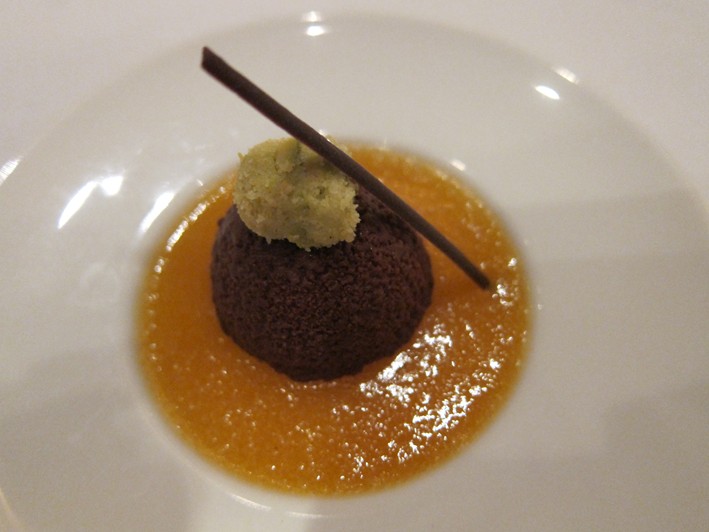
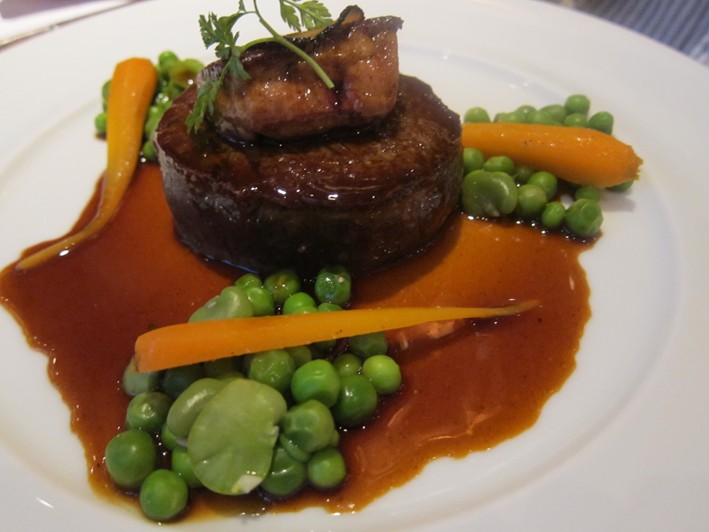
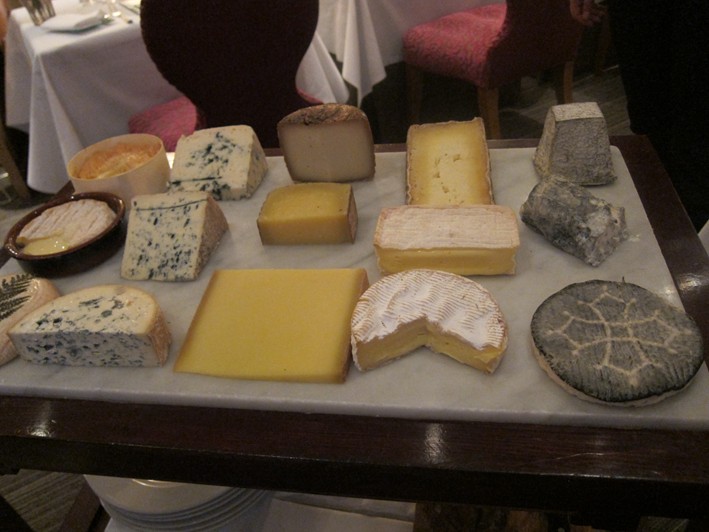
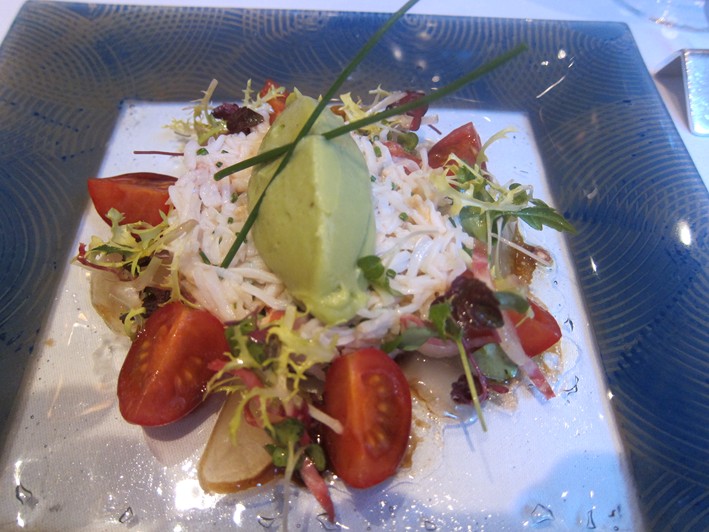
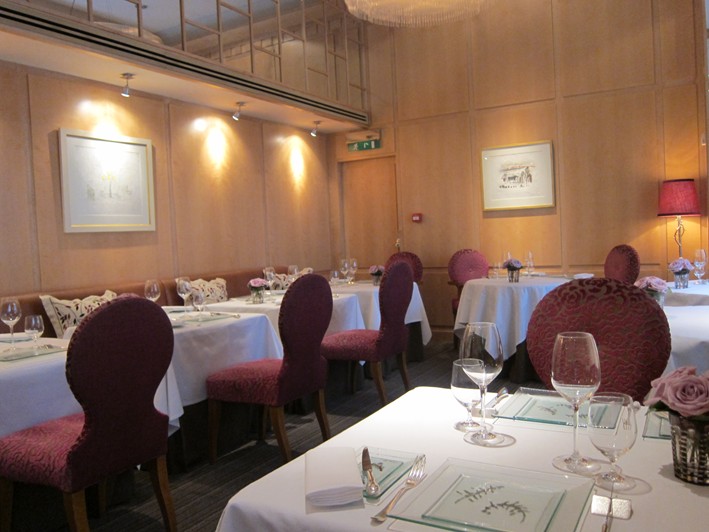
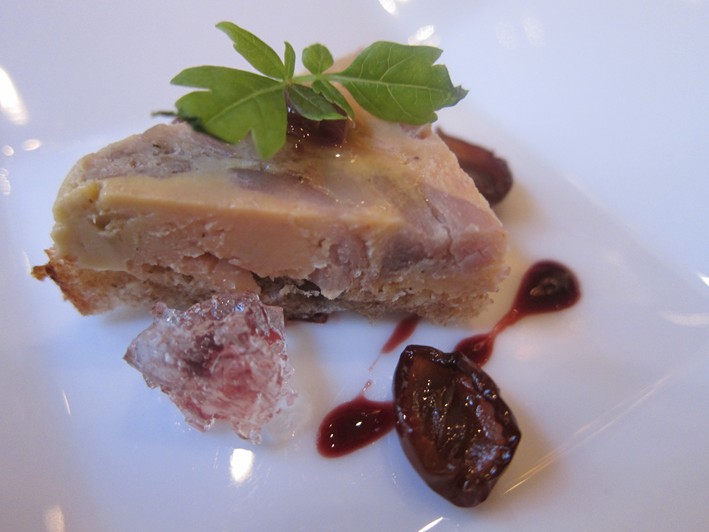
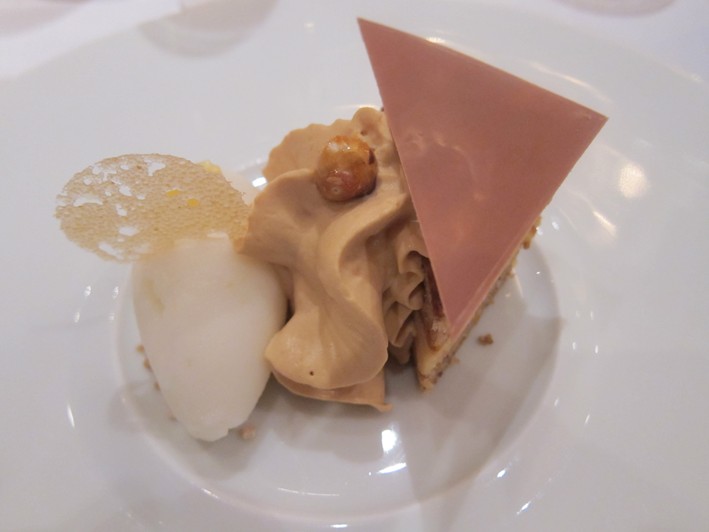
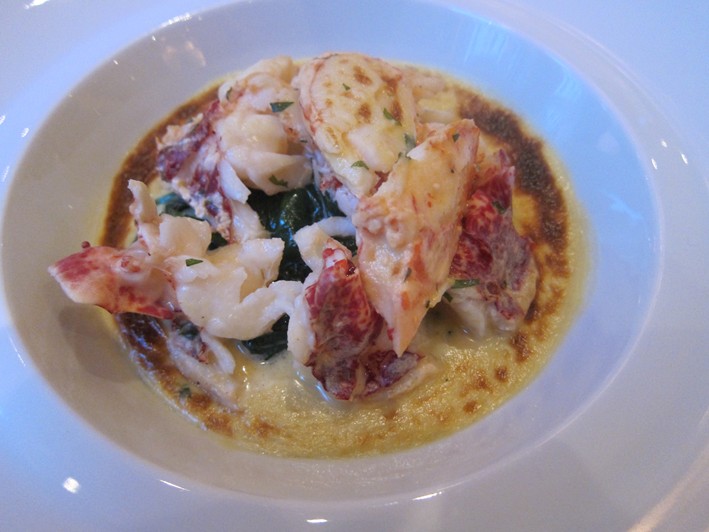
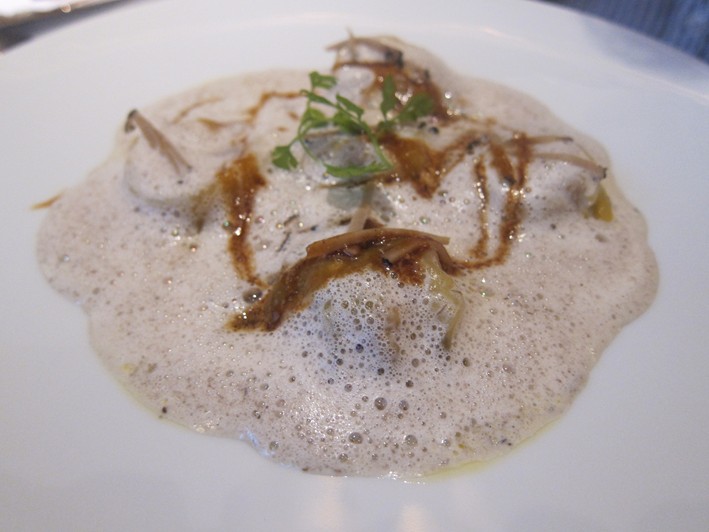

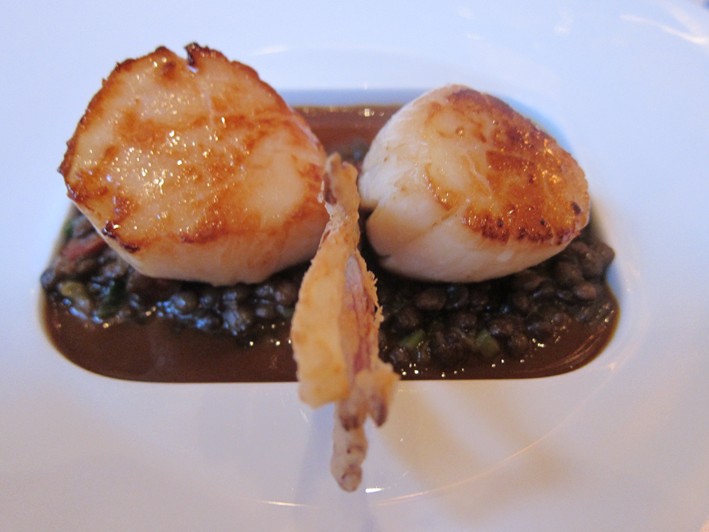
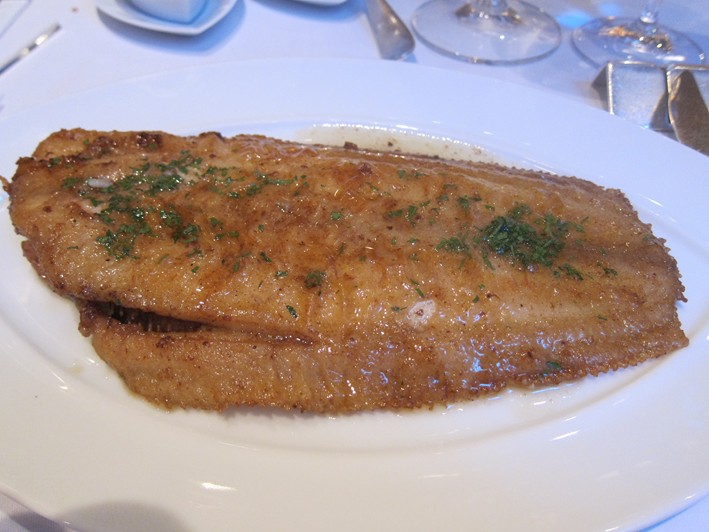
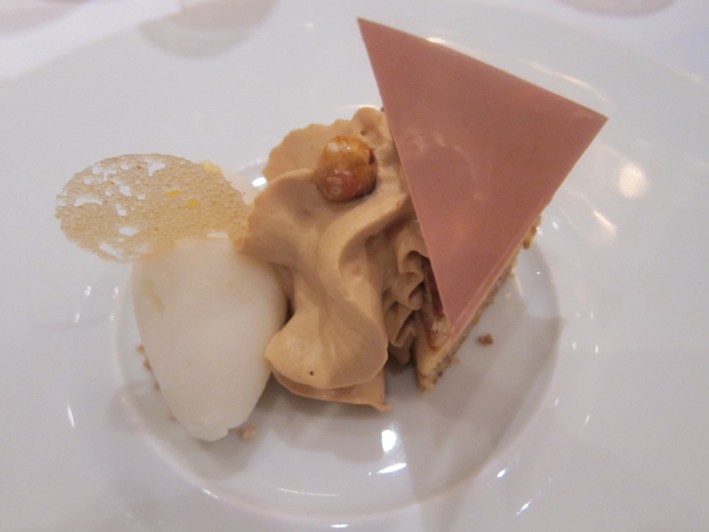
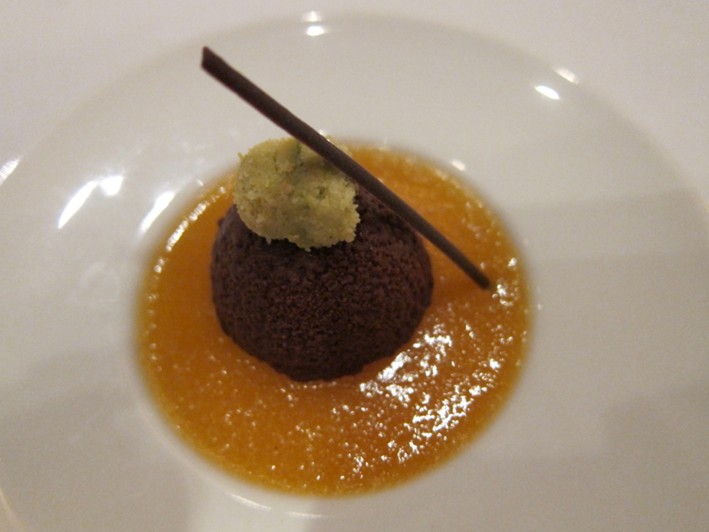
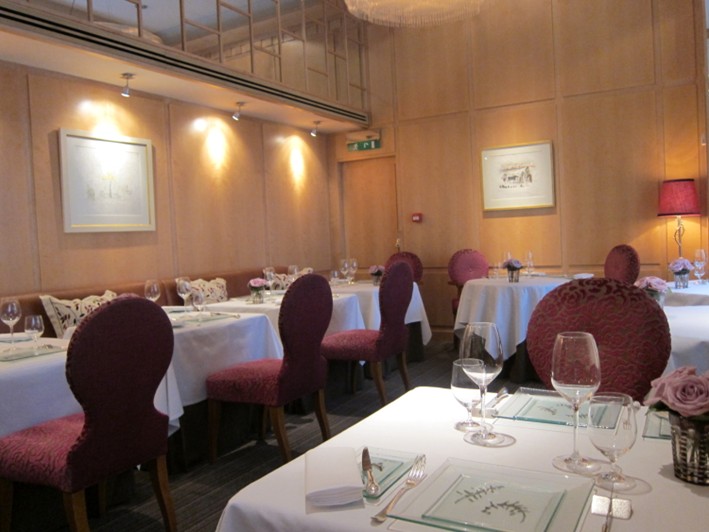


Adrian Turner
Sad to see that the Capital follows fashion by buying in a 'brand.' That's not what we want, really. I would have thought this sort of operation would fit better into the Food Hall of Harrod's. I went once to Outlaw's restaurant in Cornwall and walked out - 5 or 6 no-choice seafood dishes seemed like a recipe for boredom, but the Grill place in the same hotel produced a rather pleasant meal.
Penny Lindsay
I agree with your comment about the pastry chef going off the rails. We ate at The Capital a few weeks ago - we had the taster menu - and, although most of the savoury courses were very good, the desserts were all a real let-down for me. Some of this can be put down to personal taste, but not liking even one of the desserts (and I am not a fussy eater by any stretch!) really does suggest that something is amiss. A shame, because the other courses were in the most party very tasty with some thoughtful presentation.